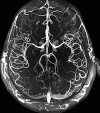The State of the NIH BRAIN Initiative
- PMID: 29921715
- PMCID: PMC6052245
- DOI: 10.1523/JNEUROSCI.3174-17.2018
The State of the NIH BRAIN Initiative
Abstract
The BRAIN Initiative arose from a grand challenge to "accelerate the development and application of new technologies that will enable researchers to produce dynamic pictures of the brain that show how individual brain cells and complex neural circuits interact at the speed of thought." The BRAIN Initiative is a public-private effort focused on the development and use of powerful tools for acquiring fundamental insights about how information processing occurs in the central nervous system (CNS). As the Initiative enters its fifth year, NIH has supported >500 principal investigators, who have answered the Initiative's challenge via hundreds of publications describing novel tools, methods, and discoveries that address the Initiative's seven scientific priorities. We describe scientific advances produced by individual laboratories, multi-investigator teams, and entire consortia that, over the coming decades, will produce more comprehensive and dynamic maps of the brain, deepen our understanding of how circuit activity can produce a rich tapestry of behaviors, and lay the foundation for understanding how its circuitry is disrupted in brain disorders. Much more work remains to bring this vision to fruition, and the National Institutes of Health continues to look to the diverse scientific community, from mathematics, to physics, chemistry, engineering, neuroethics, and neuroscience, to ensure that the greatest scientific benefit arises from this unique research Initiative.
Copyright © 2018 the authors 0270-6474/18/386427-12$15.00/0.
Figures



References
-
- Abdelfattah AS, Farhi SL, Zhao Y, Brinks D, Zou P, Ruangkittisakul A, Platisa J, Pieribone VA, Ballanyi K, Cohen AE, Campbell RE (2016) A bright and fast red fluorescent protein voltage indicator that reports neuronal activity in organotypic brain slices. J Neurosci 36:2458–2472. 10.1523/JNEUROSCI.3484-15.2016 - DOI - PMC - PubMed
MeSH terms
LinkOut - more resources
Full Text Sources
Other Literature Sources
Research Materials
